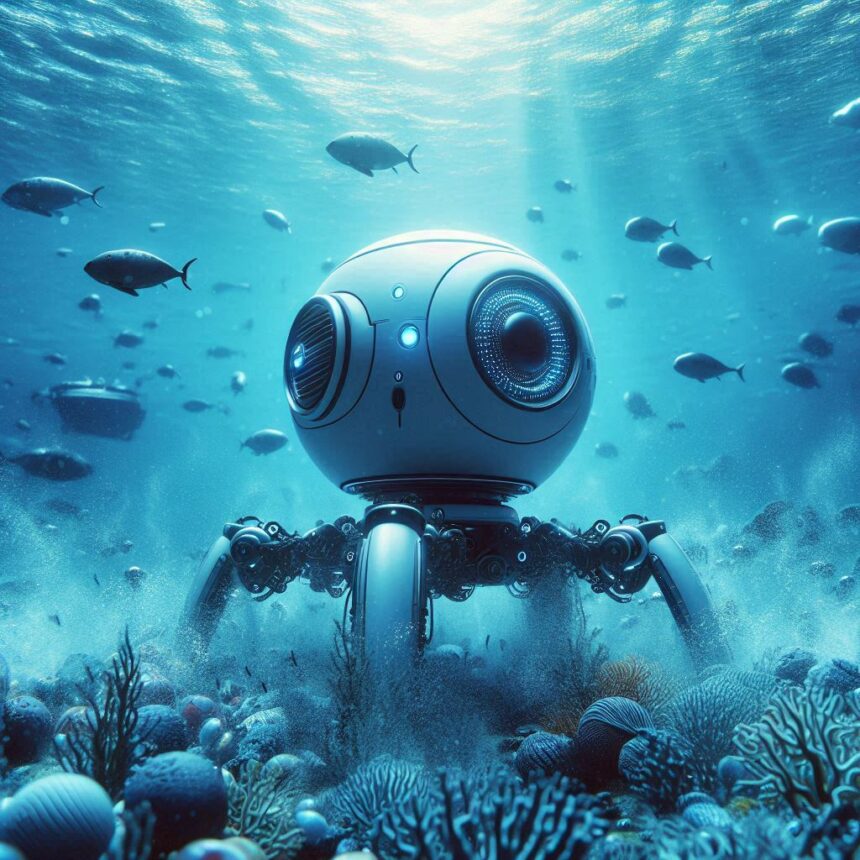The exploration of the ocean has always been a challenging endeavor due to the vastness and complexity of underwater environments. However, recent advancements in Autonomous Underwater Vehicles (AUVs) have dramatically enhanced capabilities in marine surveillance, environmental monitoring, and oceanic research. These AI-driven robots can navigate the depths of the ocean autonomously, providing critical data to support climate change studies, marine biodiversity conservation, and national security operations.
The Need for Advanced Underwater Surveillance
The Challenges of Ocean Exploration
Despite covering over 70% of the Earth’s surface, the ocean remains one of the least explored regions. Challenges such as extreme pressure, darkness, and unpredictable conditions have made underwater research difficult and expensive. Conventional manned explorations have limitations in terms of depth, time, and operational risks.
Addressing Climate Change and Marine Conservation
AUVs play a significant role in understanding the impacts of climate change on marine ecosystems. By collecting real-time data on temperature fluctuations, coral reef health, and underwater carbon sequestration, these robots assist in formulating conservation strategies.
How Autonomous Underwater Vehicles (AUVs) Work
AI and Machine Learning Integration
Modern AUVs are equipped with artificial intelligence and machine learning algorithms that allow them to:
- Identify and classify marine species
- Detect and map underwater geological formations
- Monitor oceanic pollution and track oil spills
- Adapt to changing underwater conditions in real-time
Sensor Technologies and Data Collection
AUVs utilize cutting-edge sensors such as:
- Multibeam Sonars: For high-resolution seabed mapping
- LIDAR Systems: For precise underwater navigation
- Hydrophones: To detect marine mammal activity and human-made disturbances
- Chemical Sensors: To measure water quality, including pH levels, salinity, and oxygen content
Applications of AI-Powered Underwater Robots
Marine Life Studies and Biodiversity Conservation
AUVs have been instrumental in deep-sea ecological studies. They help researchers monitor endangered marine species, track migration patterns, and analyze biodiversity hotspots without human interference.
Climate Change Research
By collecting oceanic temperature data and observing changes in ice shelves, these robots provide essential insights into global warming and its effects on marine life and sea level rise.
National Security and Defense
Several nations are leveraging AUV technology for maritime security and defense applications. These robots assist in:
- Underwater reconnaissance and surveillance
- Mine detection and disposal
- Border patrolling and illegal fishing prevention
Underwater Infrastructure Inspection
Oil rigs, underwater pipelines, and cable networks require regular inspections. AUVs offer an efficient and cost-effective solution for assessing structural integrity without the need for human divers.
Case Studies: Successful Implementation of AUV Technology
Case Study 1: Deep-Sea Exploration by WHOI’s REMUS AUV
The Woods Hole Oceanographic Institution (WHOI) deployed the REMUS AUV for deep-sea exploration. It successfully mapped the Titanic wreck and contributed valuable data for marine archaeology.
Case Study 2: NOAA’s Climate Research Using AI-Powered AUVs
The National Oceanic and Atmospheric Administration (NOAA) has been utilizing AUVs to study the impact of climate change on oceanic currents, marine habitats, and storm formation.
Future Trends and Challenges
Enhanced AI Capabilities
Future AUVs will feature more advanced AI algorithms capable of autonomous decision-making and predictive modeling for environmental changes.
Sustainable Energy Sources
Innovations in renewable energy, such as solar and wave energy, will enable AUVs to operate for extended durations without the need for frequent recharging.
Cost and Accessibility Barriers
Despite technological advancements, high development and maintenance costs remain a challenge. Efforts are being made to produce cost-effective models to enhance accessibility for research institutions worldwide.
Conclusion
The rapid advancements in AI-driven underwater surveillance robots are transforming ocean exploration, climate research, and marine conservation. These autonomous systems not only enhance our understanding of underwater ecosystems but also pave the way for sustainable solutions to global challenges. As AI and robotics continue to evolve, AUVs will play an increasingly vital role in protecting and preserving the world’s oceans.
Related Articles
- AI-Powered Soil Health Robots for Farming
- Amazon’s Warehouse Robots: Efficiency Boost or Job Threat?
- AI-Enhanced Track: The Beatles Win Grammy with AI Assistance
